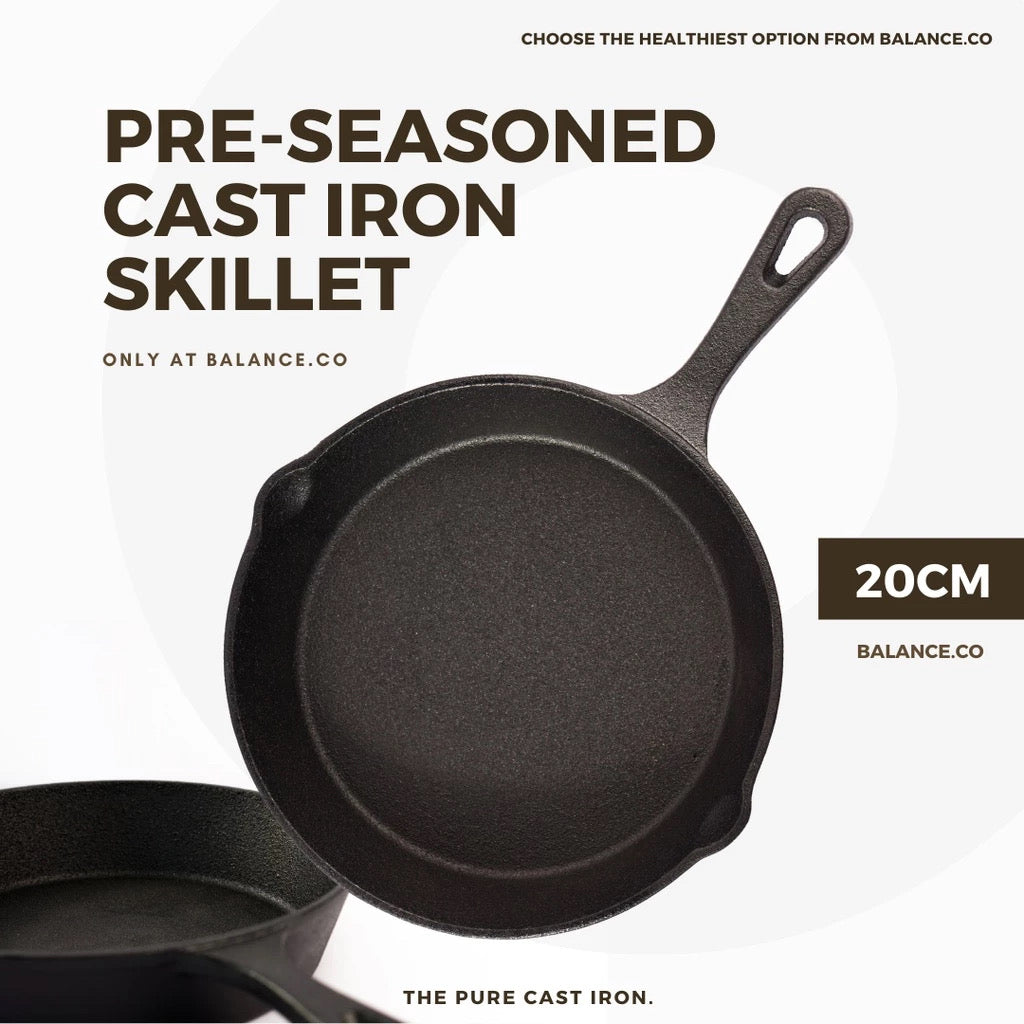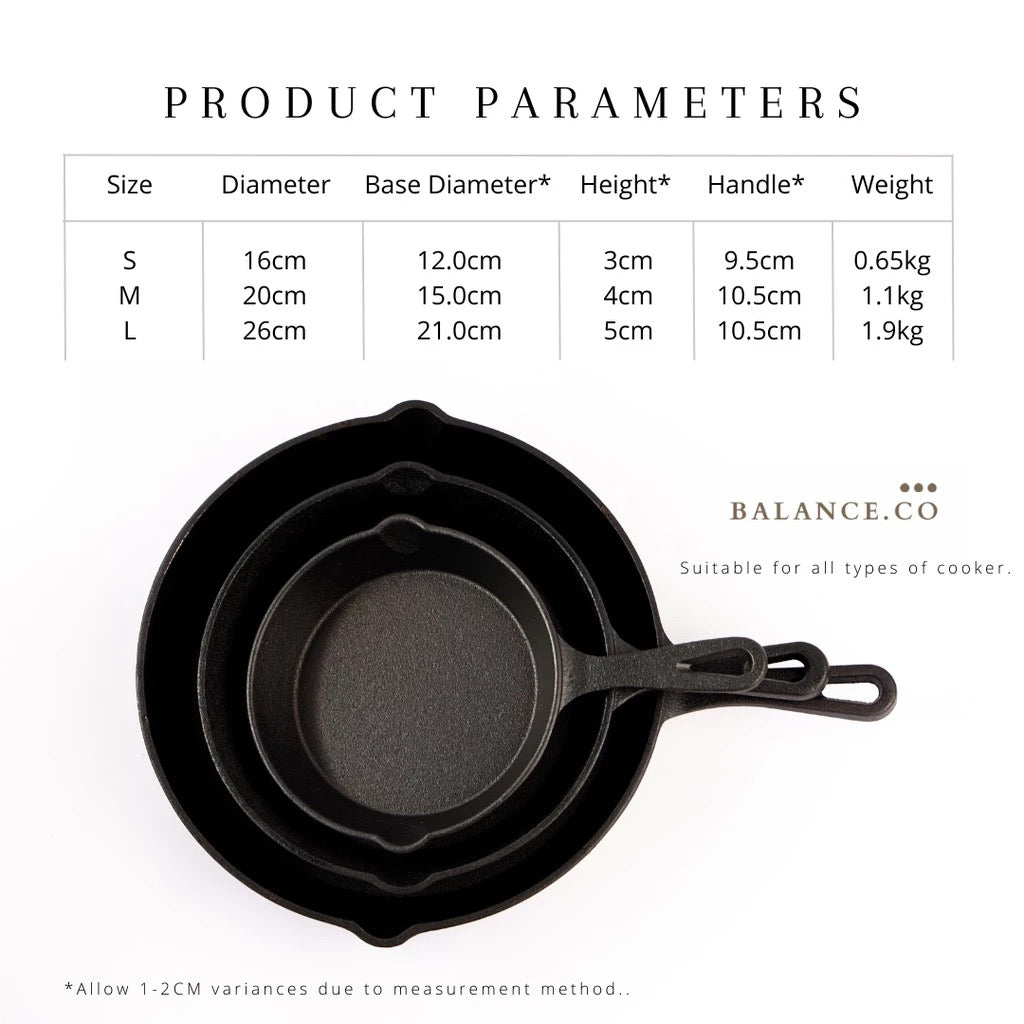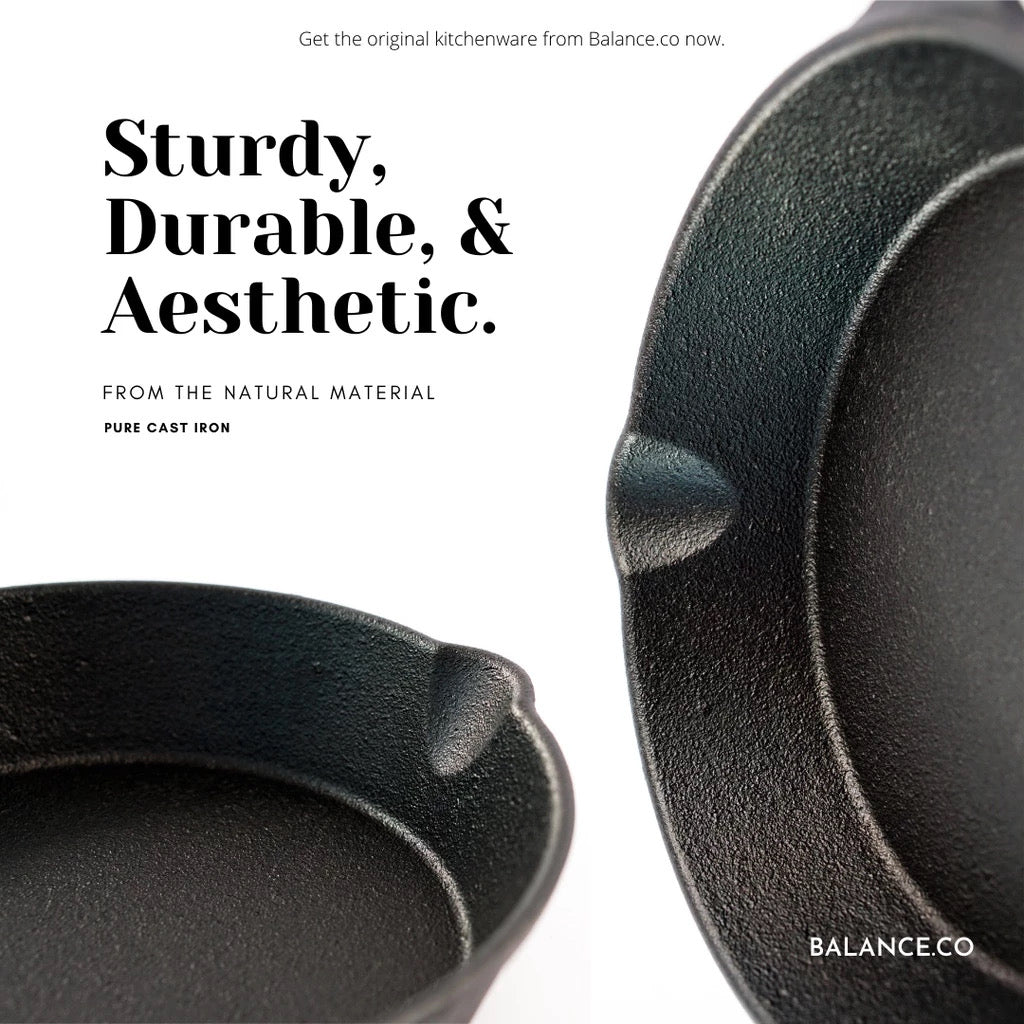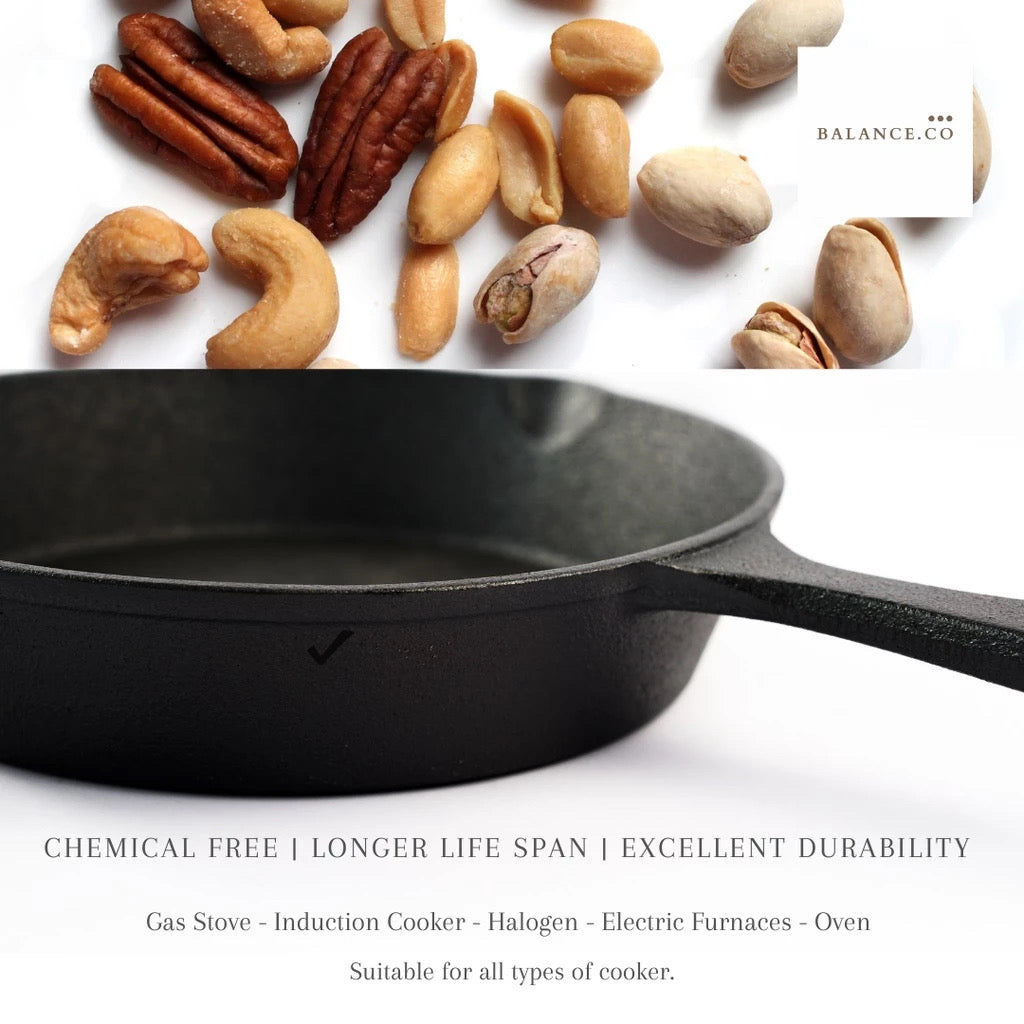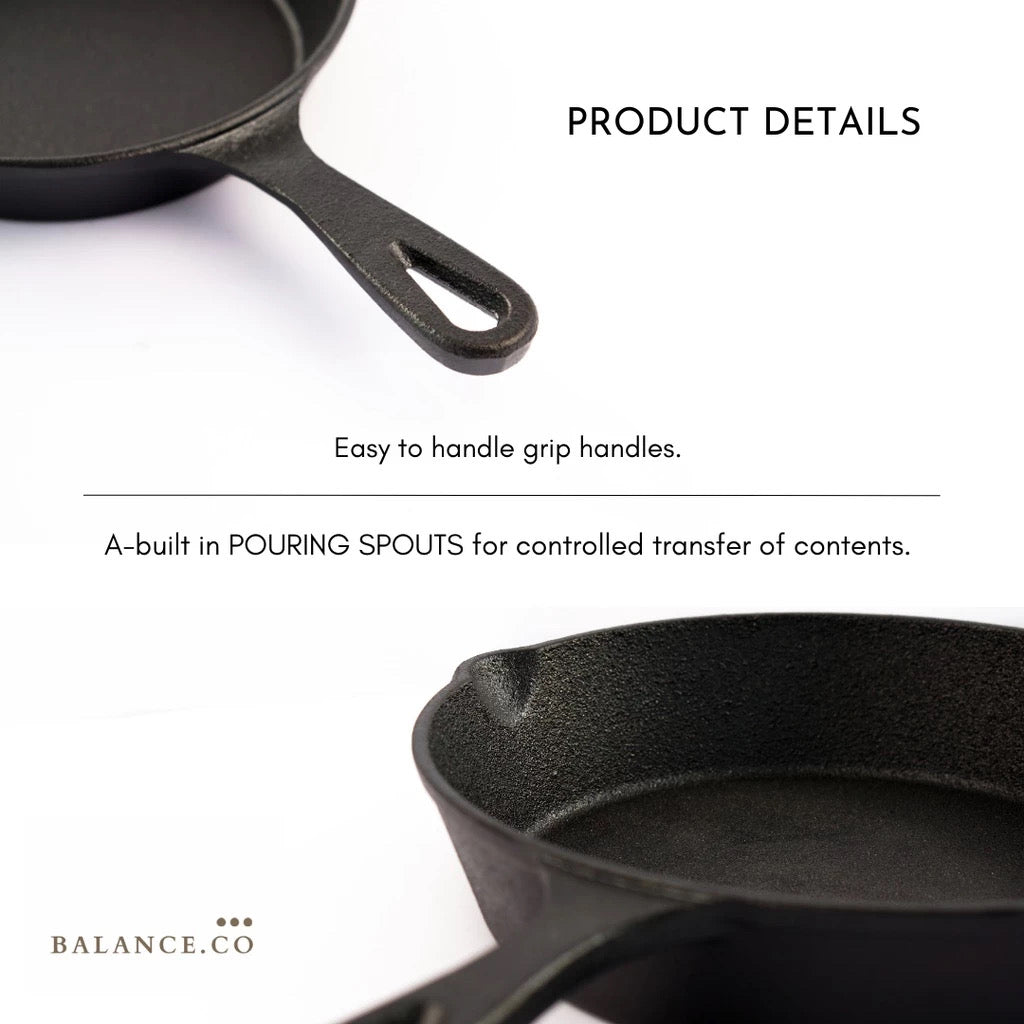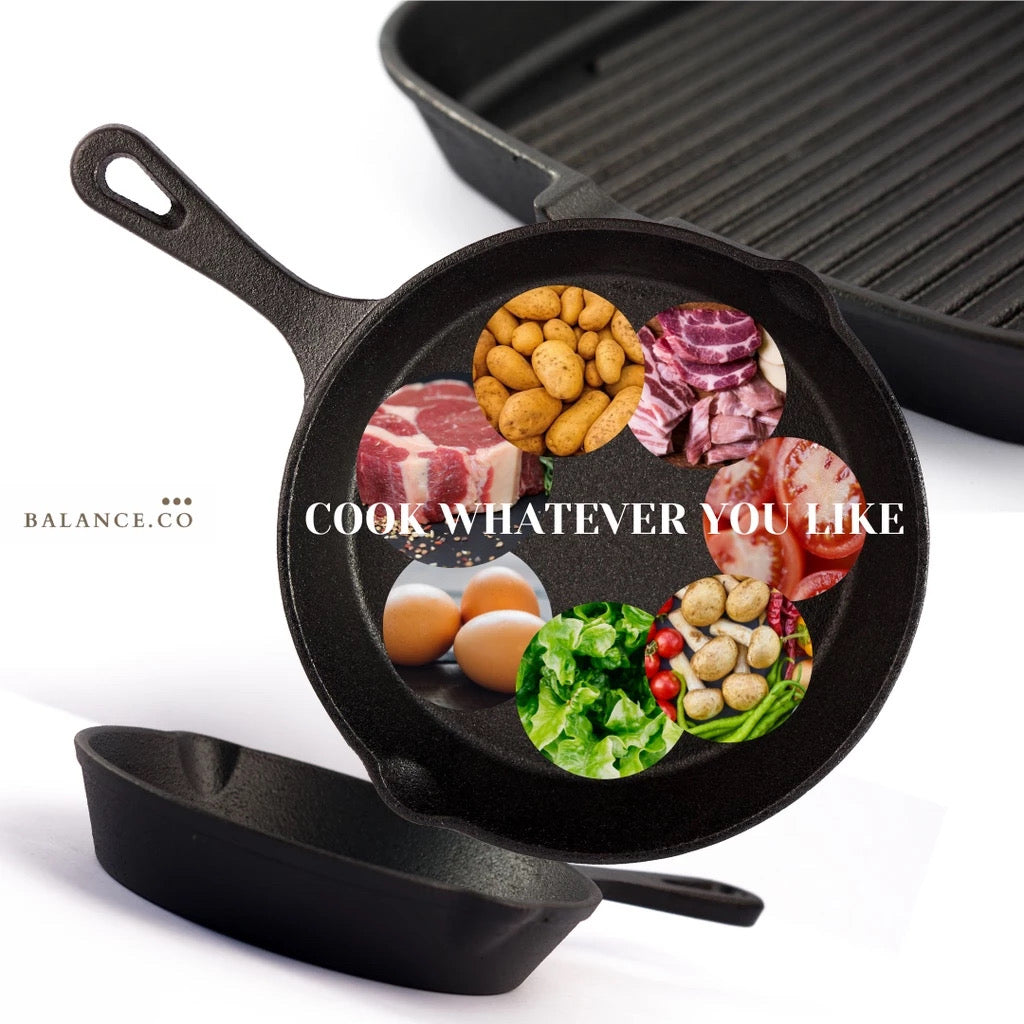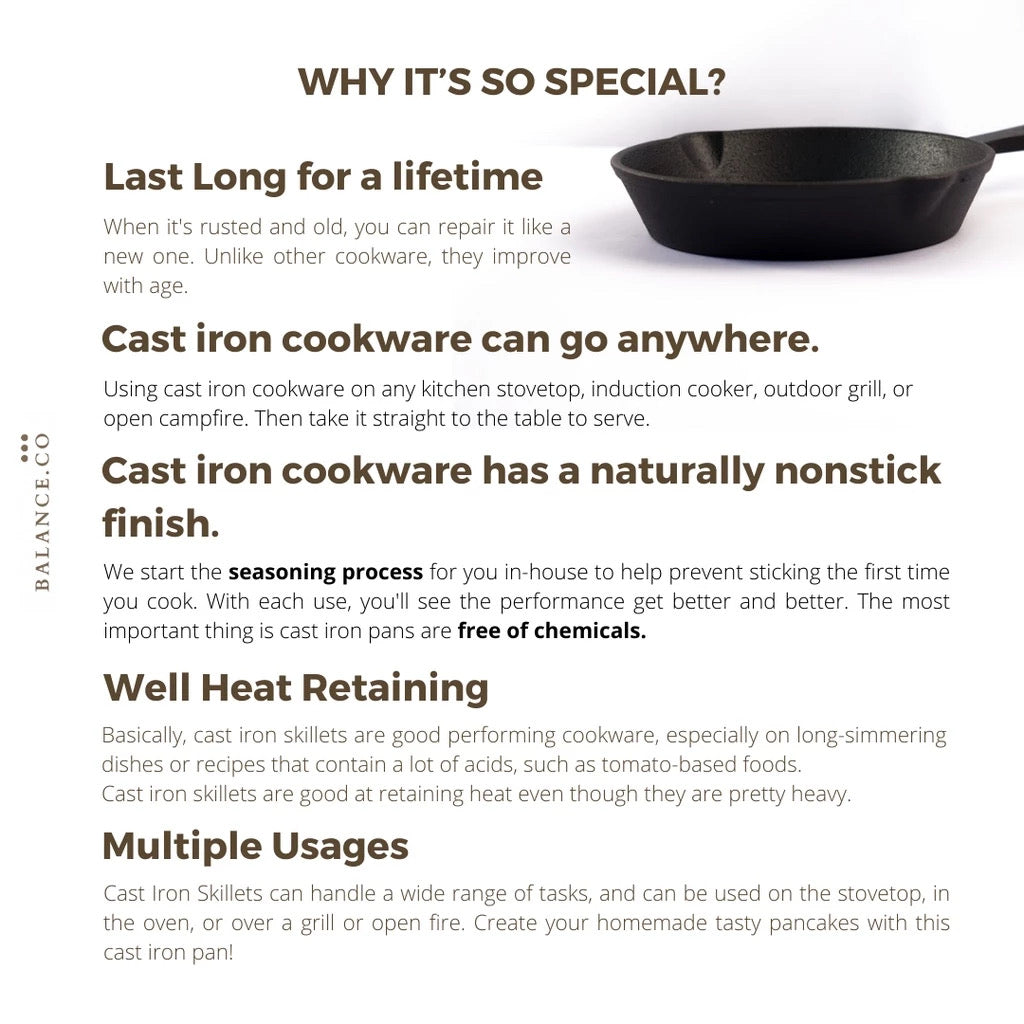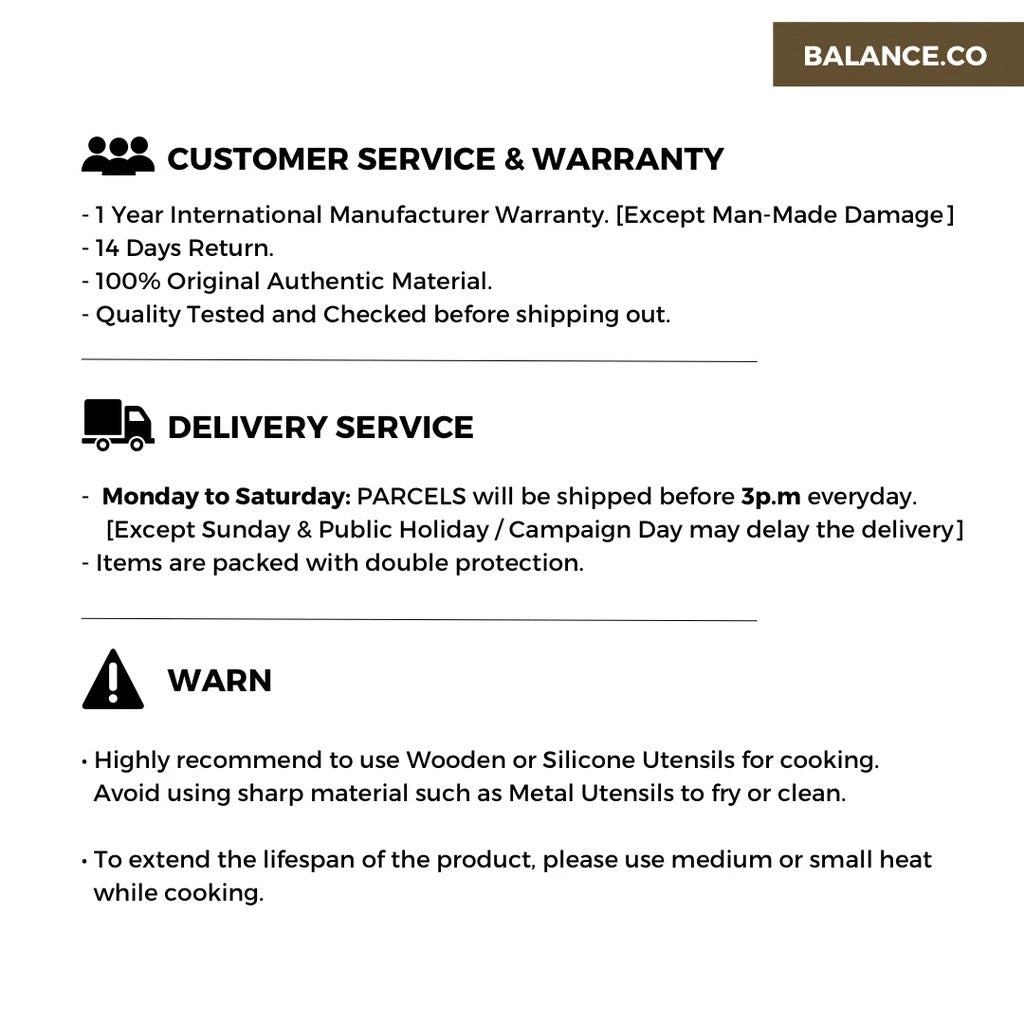My Store
20CM Premium Pre-Seasoned Cast Iron Skillets
20CM Premium Pre-Seasoned Cast Iron Skillets
Couldn't load pickup availability
Product Specification:
-
Weight: 1.2kg~1.3kg (Approx.)
Note: Weight may vary due to different batches of production. - Dimensions (with spout): 31.3 cm (L) x 21 cm (W) x 4 cm (H)
- Diameter (without spout): Approx. 20 cm
- Thickness: 0.40 cm
- Handle Length: 11.5 cm
- Capacity: 0.8 L
Packaging:
- Type: Box
- Packaging Weight: 1.40 kg (+/-)
Compatible Stoves & Hobs:
- Gas, Induction, Ceramic, Electric Plate, Oven, and Gas on Glass
(Note: Not suitable for microwave or dishwasher use.)
What's in the Box:
- 1 x 20 cm Cast Iron Round Skillet
What is Pre-seasoned Cast Iron?
Pre-seasoned cast iron means the skillet has been coated with wax or oil to prevent rusting after manufacturing. This is often referred to as “factory seasoning.” However, customers still need to clean and re-season it before the first use to improve its non-stick properties.
Steps to Re-season the Skillet After Purchase:
- Wash your new skillet with soap and a brush to remove any factory residue.
- Rinse thoroughly with water.
- Dry the skillet with a cloth.
- Heat it on the stovetop until it’s smoking hot to ensure it's fully dry.
(Important: Water is the enemy of cast iron as it can cause rust.) - Apply a thin, even coating of your preferred cooking oil (inside and outside).
Note: Wipe off any excess oil to avoid a sticky surface. - Let it cool or hang to dry, ready for the next use.
4 Mistakes to Avoid When Cooking with a Cast Iron Skillet:
-
Not Preheating the Skillet:
Always preheat the skillet before cooking. Putting cold food on a cold skillet will cause it to stick. -
Skipping the Grease:
Once the skillet is heated, add butter or lard to enhance flavor and improve non-stick properties. -
Moving Food Too Much While Searing:
Avoid moving the steak constantly while searing. Let it sit to develop a proper crust. -
Flipping Too Early:
Flip the steak only when a thin brown crust has formed on the outside.
How to Clean a Cast Iron Skillet After Cooking
Important: Do not use soap, steel wool, or put it in the dishwasher.
Why? Soap removes the skillet's seasoning (the non-stick layer), and steel wool can scratch the surface, making it rust.
But if you really want to use soap or steel wool:
If you decide to use soap or steel wool, you’ll need to re-season the skillet afterward. Just rub a thin layer of oil all over the skillet (inside and outside), then heat it on the stove or in the oven until the oil forms a protective layer.
- Immediately after cooking, pour hot water into the hot skillet.
- Gently scrub the skillet with a sponge or stiff nylon brush (use tongs to avoid burns).
- Rinse with hot water.
- Sprinkle some salt in the pan and add a little hot water.
- Use a wooden spatula to scrape off any tough stains.
- Rinse thoroughly with water.
- Dry the skillet completely with a towel, then heat it on low on the stovetop.
- Apply a thin layer of oil to season it (both inside and outside), and store it in a dry place.
Share
